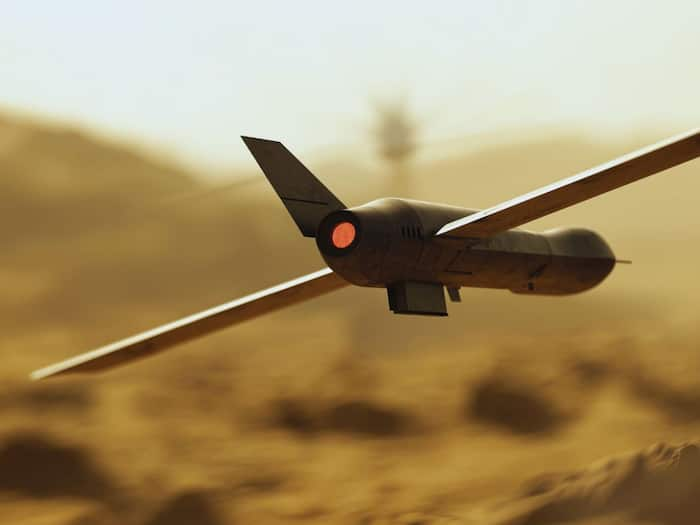
Written By Deepti Ratnam
Edited By: Deepti Ratnam | Published By: Deepti Ratnam | Published: May 07, 2025, 09:43 AM (IST)

India, in a bold move on Wednesday, 7 May 2025, strikes nine terror bases in Pakistan and Pakistan-occupied Kashmir, including Muridke and Bahawalpur. The strike was launched by India in retaliation for a deadly terrorist attack in Pahalgam that killed dozens of civilians. The strike was carried out at 1:44 AM IST on terror groups including Lashkar-e-Taiba and Jaish-e-Mohammed. What made this strike stand out is the use of a cutting-edge weapon system called Loitering Munitions.
In this article, we will delve into what is Loitering munitions are and how it is used, and how they showcase India’s technological advancement:
Loitering munitions are a new type of cutting-edge weapon often referred to as suicide drones or kamikaze drones. This new drone system has defined how the modern warfare works. They are a hybrid kind of weapon that lies between drones and missiles. Unlike regular missiles that strike immediately after launch, Loitering munitions wait for the right moment and then attack.
Loitering munitions worked as an unmanned aerial vehicles that basically hover silently over a target for an extended period and then attacks on it. As soon as the threat is spotted, the drone dives towards them and detonates on impact. It ensures a direct hit with minimal risk to civilians and infrastructure nearby.
India used precision strike weapon systems of the three forces, the Indian Army, Navy and Air Force, including loitering munitions.
The attacks were carried out only from Indian soil: Sources tell ANI News.
➡️ India has reportedly shot down a Pakistani fighter jet in the… pic.twitter.com/Zhf7L9PW8Q
— Indo-Pacific News – Geo-Politics & Defense (@IndoPac_Info) May 6, 2025
India strikes on Pakistan in retaliation for a terrorist attack on civilians in Pahalgam, Kashmir. The Indian Army used Loitering munitions in their Operation Sindoor on 7 May 2025. Indian military used these drones in a very strategically manner where they first identified and located the terror bases, possibly with the help of satellite imagery. Then, once the target is confirmed, loitering munitions were launched from within Indian territory. By using this drone weapon, India made sure they are avoiding sending the fighter jets or ground troops to keep the operation contained and low-risk.
The use of Loitering munitions showcases how far military technology in India has advanced and how it is playing a critical role in identifying and destroying high-value terror. Because of their accuracy and stealth, loitering munitions are ideal for counter-terrorism missions where every move must be calculated and deliberate.
Loitering munitions is one of best example of how artificial intelligence, surveillance, and precision-guided tech are becoming central to national defense strategies. These drones combine real-time surveillance and autonomous navigation that helps in identifying the target precisely. Additionally, these drones are also perfect in precise striking power.
In terms of technology, Loitering munitions are likely using AI-supported systems to identify, track, and verify the moving or hidden targets which showcases India’s growing reliance on smart weapons. The drones’ small size and silent loitering ability made them difficult to detect, proving India’s use of stealth technology in a combat setting.